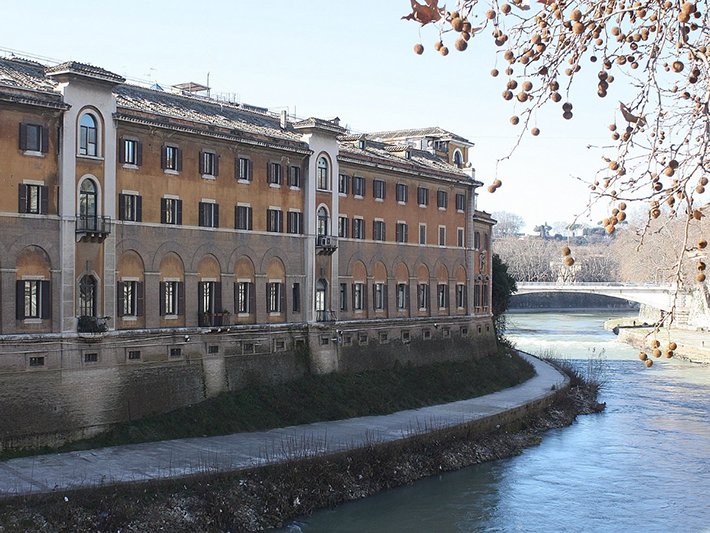How’s this for an intriguing subject that somehow escaped public attention for 79 years until it made its way into a recent documentary film? Toward the end of the Second World War, three physicians at a hospital in Rome cooked up an infectious disease to shield Jews.
Titled Syndrome K, the film, which was released in August, is the brainchild of Stephen Edwards. It tells the story of Adriano Ossicini, Giovani Borromeo and Vittorio Sacerdoti, doctors at Rome’s Fatebenefratelli Hospital, who invented a fake disease they named “K Syndrome” in late 1943 to prevent Nazis from finding Jewish “patients” they classified as suffering from the rare fictitious disease.

Fearing that they would catch the infection, the Nazis did not dare enter the hospital ward housing the Jewish refugees they believed were suffering from a condition whose name called to mind Koch Syndrome—a real disease caused by the tuberculosis bacillus. The Jews remained in the ward until the Allies liberated Rome in 1944.
Edwards, who was raised Catholic but grew up in a largely Jewish community in Ann Arbor, Michigan, got the idea for the film after seeing a meme about the “K Syndrome” story on Facebook. He was shocked when he realized that nobody had ever made a documentary about the three Italian doctors whose clever idea saved the lives of numerous Jewish refugees. Of the trio, Sacerdoti was Jewish. The other two were Catholic.
Precisely how many Jews were saved remains unknown, according to the film, which is narrated by Ray Liotta, the renowned actor who died earlier this year at 67 before the film’s release. A 2019 article in History Today magazine says hundreds of Jews who were welcomed to the “K Syndrome” hospital ward were saved from concentration camps.
“That’s why I think it’s such a secret story—the doctors didn’t crow about what they did, or talk about it a lot,” Edwards said in an article published by the Jewish Telegraphic Agency.
In fact, the saga remained so obscure that it isn’t even mentioned in The Battle for Rome: The Germans, the Allies, the Partisans, and the Pope, September 1943–June 1944, an authoritative book by the historian Robert Katz about the Nazi occupation of Rome.
When Edwards took on his documentary project, he learned that Ossicini, then 98, was still alive. He flew to Rome and interviewed the doctor after an Italian-Jewish journalist, Ariela Piattelli, put the two in touch. Edwards also interviewed two brothers who survived as children in the “K Syndrome” ward. In addition, he talked with Pietro Borromeo, the son of Giovani Borromeo.
The older Borromeo protected the family of one of his Jewish mentors, an action for which he was awarded the Righteous Among the Nations medal at Yad Vashem: The World Holocaust Remembrance Center located in Jerusalem. Both Ossicini and the younger Borromeo died within a year of their interviews.
Edwards, a Second World War buff, remembers learning about the Holocaust. “When I was probably 12 or 13 years old, I was watching TV on a Saturday morning…when I saw one of these documentaries about the Holocaust, where it showed all the atrocities and horrors,” he recalled.
“And I was just horrified—I had no idea.”
For the filmmaker, the focus of this documentary was how the Italians responded to the threat of atrocities. He points out that 80 percent of Italian Jews survived the Holocaust, in sharp contrast to the Jews in most of Europe.
“This is a story about people being their very, very best, in the face of people being their very, very worst,” Edwards said, “and that’s what really attracted me to it.”
_______________
From its beginnings, the Church of Scientology has recognized that freedom of religion is a fundamental human right. In a world where conflicts are often traceable to intolerance of others’ religious beliefs and practices, the Church has, for more than 50 years, made the preservation of religious liberty an overriding concern.
The Church publishes this blog to help create a better understanding of the freedom of religion and belief and provide news on religious freedom and issues affecting this freedom around the world.
The Founder of the Scientology religion is L. Ron Hubbard and Mr. David Miscavige is the religion’s ecclesiastical leader.
For more information visit the Scientology website or Scientology Network.


